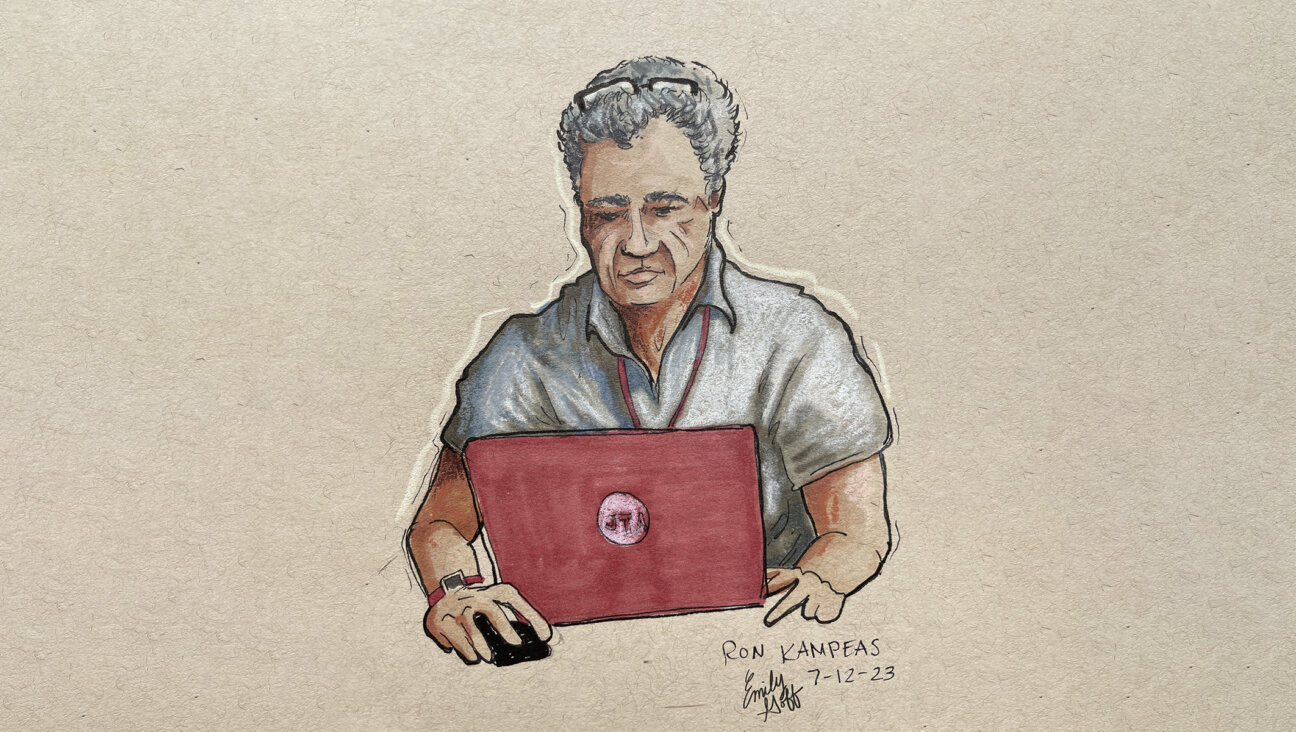Learning the Facts of Life
Josie used to love pretending to give birth to her toys. She’d stuff one under her shirt, lie down on the living room floor, grunt a few times, then whip out a teddy bear from under her shirt. Ta da! Then I’d nurse Maxine, she’d bottle-feed the bunny, and we’d talk companionably about our babies’ sleep schedules and whether they’d started solids. Good times.
She came up with this game when Maxine was a few months old. I suppose by then she was used to the little interloper; Maxine had also become interactive enough to be the subject of imaginative play. Earlier, she’d met my midwife and gotten some idea of what the job entailed (as evidenced by her bellowed query to me in the waiting room: “Do you like it when Yael looks in your vagina?”). She knew that the baby started off in my belly, that Yael helped the baby come out and that “pushing” was involved. But she didn’t seem terribly interested in the baby’s exact mode of egress. Or how it got in there in the first place. No, she just liked lying on the floor, whipping out plush schnauzers.
I wasn’t planning on saying anything more about sex until she was much older. But then I listened to some other parents insisting that kids didn’t need to know anything about sex until they were at least 8. I knew I’d known about sex by 8, and I imagined Josie getting an earful from some potty-mouthed kid in the playground at 6 or 7, and thought, what, I’m gonna relinquish a teachable moment to some booger-encrusted second grader who’ll tell her that if she swallows a watermelon seed it’ll grow into a baby? Furthermore, I thought about some of the noxious potty-training books we have, with their cutesy nicknames for penis and vagina, and the random books we have that name a gazillion body parts yet completely skip over the ones between people’s legs. (Given that peeing and pooping at the appropriate time and in the appropriate receptacle is a huge part of every preschooler’s existence, what must these kids think when books about the body don’t acknowledge how the pee and poop get out?)
And finally, I wanted to be sure Josie knew that there are lots of ways to have a family. She has gay uncles; she has friends with one mommy or two mommies. In her kidlike zeal to categorize and classify the world, she’d already begun saying, “Only girls wear earrings” (despite the earrings in daddy’s ears) and “Boys are braver than girls.” So I wanted to be ready if she said, “You need a mommy and a daddy to have a baby.”
Several of my friends recommended a book called “It’s So Amazing” (Candlewick, 1999) by Robie Harris, illustrated by Michael Emberley. I already had Harris’s “Don’t Forget to Come Back” (Candlewick, 2004), a very funny and fun-to-read-out-loud book about separation anxiety. (Josie loved the young narrator’s dire warning: If her parents go out for the evening, she will be eaten by a moose.)
I was planning to read only a few carefully chosen chapters of “It’s So Amazing” to Josie, but she saw the book on the end table and was immediately drawn to the comic-book style illustrations, cute bird and bee narrators, lively layout and images of moms and babies of every size, race and hairdo. She adored it instantly. “One more!” she demanded after every chapter. But my own reaction to the chapters on sexual abuse and AIDS surprised me; I almost skipped them. I viscerally wanted to. Why should a 4-year-old learn this? But like a good Zen practitioner I examined my own feelings…and then kept reading. The information was presented non-sensationally, thoughtfully. And to my shock, Josie loved the chapter on “Not-Okay Touches.” She felt empowered, not frightened, by the thought of yelling “STOP!” “NO!” and “DON’T!” just like the illustrated kids in the book. My own anxiety had almost kept her from information that not only didn’t scare or faze her, but that might (ptui ptui ptui) one day help keep her safe.
And I loved that the book was matter-of-fact about the many kinds of families out there. I liked that it mentioned that there are different ways for the egg and sperm to get together and for babies to come out of the mother’s body.
“It’s So Amazing” is recommended for ages 7 and up, but it really didn’t seem too advanced for a scientifically inclined, book-loving kid who’s familiar with the Magic School Bus books. But a few months after we got it, Harris and Emberley published “It’s Not the Stork!” (Candlewick, 2006) a book for younger readers (4 and up) written in simpler language, addressing the concerns of preschoolers. They also wrote “It’s Perfectly Normal” for readers 10 and up. In 2008, they’ll do an as-yet-untitled book aimed at kids 2 and up.
I’m sure some Forward readers began composing horrified letters to the editor about six paragraphs ago. And they’re hardly alone in their disgust. “It’s So Amazing” and “It’s Not the Stork” were two of the 10 most commonly challenged books of 2005, according to the American Library Association’s Office for Intellectual Freedom. (A challenge is a formal, written complaint filed with a library or school, requesting that a book be removed because of its content.) But I fail to see how teaching kids the simple facts about sex is bad. You’d rather have the snot-nosed kid and the watermelon seed? And given that gay and lesbian youth represent 25% of homeless youth (according to the U.S. Department of Health and Human Services) and that one in six gay teens has been beaten badly enough to require medical attention (according to the Centers for Disease Control and Prevention), is teaching tolerance so bad?
I called Robie Harris to gush like a schoolgirl at a 1978 Shaun Cassidy concert. She was gracious about it. “These subjects are so charged for the adult, but for the child, they just aren’t,” she told me. “You wonder, ‘Am I giving too much information? Will it be scary or upsetting?’ But if you’re clear and matter-of-fact, it’s fine.”
Though the books’ language is casual, witty and informal (“If I wrote in a didactic way, I’d lose a young child’s attention,” she pointed out), Harris actually gets plenty of expert input. She interviews a panel of pediatricians, psychologists, psychiatrists, clergy, teachers, librarians and parents, making sure each volume is scientifically accurate and age-appropriate. Then she and Emberley work to make the text and pictures fun and engaging. “If we answer our youngest kids’ questions,” she said, “we can begin to have a dialogue that will continue as they get older.” But sadly, she said, “It’s a given that the right wing will protest. I respect that every parent should have the right to be the first person who educates their child about bodies and sexuality. But I do not respect that the right wing has the right to keep another child’s family from having a book by asking that it be removed from the library.”
Harris, the daughter of a physician, comes by her advocacy honestly. “I grew up in a Reform temple in Buffalo called Temple Beth Zion,” she said, “and our rabbi, Joseph Fink, was a wonderful man, a real social justice person. Whether he was talking about race or poverty or helping others, it was: What can you do to help others?” Harris went on to teach at the Bank Street School for Children, working with one of the first Head Start programs in the country. “I ran a program for the siblings and moms of our Head Start kids, who were very poor and sometimes had no idea how they got pregnant and how not to get pregnant,” she said. Later she worked in Bank Street’s famous Writers Lab (where kid-book luminaries Maurice Sendak and Margaret Wise Brown were also once affiliated). There she came up with the idea for a comprehensive sex-ed book.
Josie doesn’t pretend to give birth to stuffed bunnies and dogs anymore. Her interests have shifted to card games and My Little Pony. But I’m glad she knows how she and Maxine got here, and I’m glad Robie Harris and Michael Emberley were the ones to give her the information.
Write to Marjorie at [email protected].
A message from our Publisher & CEO Rachel Fishman Feddersen

I hope you appreciated this article. Before you go, I’d like to ask you to please support the Forward’s award-winning, nonprofit journalism during this critical time.
We’ve set a goal to raise $260,000 by December 31. That’s an ambitious goal, but one that will give us the resources we need to invest in the high quality news, opinion, analysis and cultural coverage that isn’t available anywhere else.
If you feel inspired to make an impact, now is the time to give something back. Join us as a member at your most generous level.
— Rachel Fishman Feddersen, Publisher and CEO






















